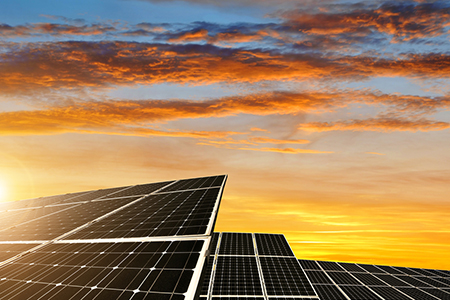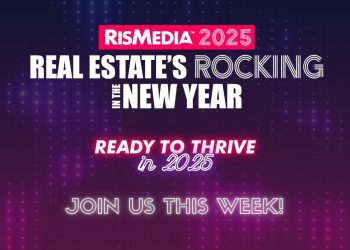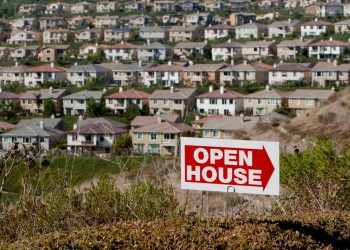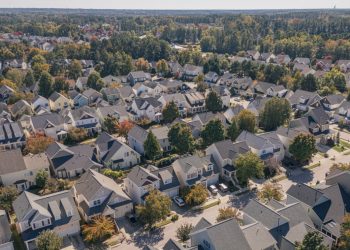In 2015, the United States reached 27.4 gigawatts (GW) of solar power capacity. That’s enough power to serve 5.4 million homes, making 2015 the biggest solar year yet. The Solar Energy Industries Association (SEIA) predicts that residential installation of solar power in the U.S. will break more records and double that capacity this year.
Between energy savings and tax breaks, adding a solar array to your home has never been more attractive or affordable. It’s also a viable investment that both saves money and adds long-term value to a property. But when it comes to installing a solar array on your home, you may be wondering whether it’s better to buy or lease the system. To help you determine which option makes the most sense for you, we’ve put together a quick overview of solar purchasing and leasing options.
The Difference between Buying and Leasing
Ownership is the number one distinction between leasing and purchasing a solar photovoltaic (PV) system. When you use cash or a solar loan to buy solar panels, you’re making payments toward owning the system outright. When you lease a solar system, the third party you’re leasing from actually owns the array and you’re just paying to use it. This difference may seem small, but it becomes significant in regard to tax credits, system maintenance, and long-term returns.
Federal and State Solar Regulations
One thing that can make a huge difference in your approach to solar financing is the regulatory climate in your state or region. Overall, 2015 was a good year for solar power. Hawaii became the first state to set a goal to achieve 100 percent Renewable Portfolio Standard (RPS) by 2045—requiring the adoption of renewable energy statewide—while Vermont set a similar goal of 75 percent.
In addition, costs for solar installation and manufacturing continue to drop, making solar more accessible to homeowners across the country. Solar leasing is also becoming a more popular option. Overall, solar power is a positive investment in every state, with returns ranging from 3.9 percent to more than 35 percent.
It’s not all great news, though. Kansas recently repealed their RPS law, leading other states to consider following suit. Another significant factor is the pending expiration of state and federal incentive programs. At the close of the last year, Congress extended the 30 percent federal energy Investment Tax Credit (ITC) through 2019, but that benefit rate will drop sharply in the years that follow.
States also heavily regulate power purchase agreements (PPAs), a special type of solar financing—similar to regular leasing—in which a third-party provider installs solar panels on a home, and all the homeowner pays for is the power they use. PPA regulations are abound, and some states don’t allow them at all, so you’ll want to check both state and municipal regulations before looking into a PPA-financed array for your home.
When to Buy a Solar Array
Homeowners who purchase a solar panel system tend to be focused on long-term financial benefits. If the following circumstances apply to you, purchasing a solar system outright might make the most sense:
- You have cash available to invest or are in a good position to take on the debt of a loan.
- You want to reduce state and federal tax liability, or you want to benefit directly from the tax credits and rebates that are available.
- You may be considering selling your home soon and want to increase the market value by installing solar panels.
- You are willing to take on the cost and responsibility of maintaining a solar system over a number of years (while noting that many systems come with a protection plan or warranty that may cover anywhere from 20 to 30 years of regular wear and tear).
- You want to take advantage of Solar Renewable Energy Certificates (SRECs), which can be sold to power companies to fill their requisite renewable energy quotas.
When to Lease a Solar Array
Those who choose to lease a solar system are usually more concerned with the environmental impact of their energy consumption and are attracted to immediate cost-savings. If the following statements reflect your feelings, leasing an array could be the best choice:
- You want a simple way to use solar power without hefty upfront costs.
- You are motivated by using renewable energy more than maximizing the long-term financial benefits of a solar panel system.
- You don’t want to take out a loan or don’t have the cash on hand to purchase a system outright.
- You aren’t eligible for available solar tax incentives, or you are discouraged at the thought of sorting out all the details necessary to claim tax credits and rebates.
- You value the ability to upgrade equipment when your lease expires.
- You don’t want to take on the cost and responsibility of maintaining a solar panel array.
Whether you’re interested in buying or leasing, the great news is that harnessing solar power for your home no longer requires a steep initial cash investment. As you identify your overall goals and consider the available financing options, use a solar cost calculator to weigh the potential costs and benefits of adding solar to your home.
Jonathan Deesing is a freelance writer obsessed with sustainability in real estate. He’s written for a variety of publications including Homes.com, SolarPowerRocks, and Just Energy Solar. When he’s not writing you can find him crawling on roofs looking at solar panels.
This post was originally published on RISMedia’s blog, Housecall. Check the blog daily for top real estate tips and trends.











